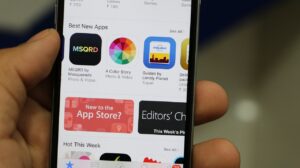Earlier, the term ‘Augmented Reality’ (AR) seemed far-off and futuristic to many. With the passage of time, the technology started gaining more popularity and ubiquity across the globe. One may not even realize the shift taking place in each and every industry including their own. The role of digitalization, in businesses of every size, has changed forever — and will continue to change at an even more fanatical pace.
I am sure you must have heard about the famous social app, Snapchat, that has been soaring in the app store for some time. The main reason behind its hype is the experience it offers to its end users while filming snaps in different styles and shapes. One of the recent innovations offered by the app was- World Lenses which has a touch of AR technology. This was all about Snapchat!
But what about you?
As a business owner or a web developer, the tactics or technology used to skyrocket your app matters the most. “Coming up next” is the key to success. I mean there was a time when the internet was considered as the shiny new object in the room, but today it has become the undisputed foundation of the digital age. AR is the talk of the town and I suppose the basic reason for the emergence of unexpected UX challenges. It all started with a lack of boundaries when unclear expectations and experiences with such apps started rolling in.
Let us understand the term “UX for AR”- In simple words, the two most well-known examples, Pokémon GO and Snapchat, use AR in a pretty light way. Technically speaking, AR decreases interaction costs, reduces a user’s cognitive load, combines multiple sources of information, and minimizes attention switches. Basically, it acts pretty much as the Holy Grail of UX. Maybe that’s the reason why the technology is seen mostly in the social media and gaming industry.
Below I would like to shed some light on certain principles that can help you in getting started with UX Design for AR effectively.
Read away & apply it to your workflow
Pre-defined environment– Born into a 3D world, it’s natural for us to ignore working in two dimensions. Still, I have come across several designers who design with pencil, paper, and screen, all media that work in two dimensions. This should not be the case! Try keeping the work environment familiar and intuitive. Augmented Reality offers its end users options that traditional experiences cannot. Using a current scenario example, we have already started tweaking the physical world through cameras. Depending on where the user is interacting, the traditional setting could have a number of obstacles such as walls, live objects, and moving parts.
Make onboarding simple- Whether it’s 2D or 3D, onboarding has always been a challenge. So in order to succeed, you need to get acquainted with the learning curve. Yes, one has to strive hard to be better than the standards that are in place, if it means more successful onboarding. Do not limit yourself by convention over intuition and don’t even try reinventing what already works.
Your users are smart enough and they know how to view a 3D environment through their devices; use this to your advantage.
Keep it predictable– It may interest you to know that AR successfully blurs the line between the physical and digital world, but still, people continue to seek familiar gestures and interactions. As a result, many times facial and object detection, gestures, and movements turn out to be a great challenge.
Leaving clues behind– Most of us tend to look around for clues and instructions in real life especially when we are navigating. The same is true with technology. For example- when you are hunting for the best restaurant in town, you look around for different signs, maps, and locations to get you to your destination.
So leave clues for your end users. This will encourage them to interact well with the environment. In fact, you can even think of inserting graphics and dynamic animation that won’t just act as a guide but even become the experience itself. After all, instructions don’t always have to be in the form of text or signs.
Make it worthwhile– Always ask yourself, whether it’s worth the time and money? What kind of AR experience are you offering your end users? Are you enhancing it for them? As interaction with digital interfaces becomes more widespread, integrating AR experiences into current user behaviors will find a way into experiences with which users are familiar.
Delighting users is fine but keep them grounded– Disruptive technologies such as AR and VR can succeed in providing users a sense of thrill and enchantment- but as a business owner, you have to sustain that feeling. In the end, you need to feel a strong connection to, or see an advantage of integrating with, your app or else it will be considered a mere gimmick.
Final Word
Overall, Augmented Reality is capable enough to provide its end users what they crave for. Exciting, entertaining, useful, meaningful are certain words used to describe such technology. So, are your business goals ready to marry user needs with AR to come up with something digitally delightful?





